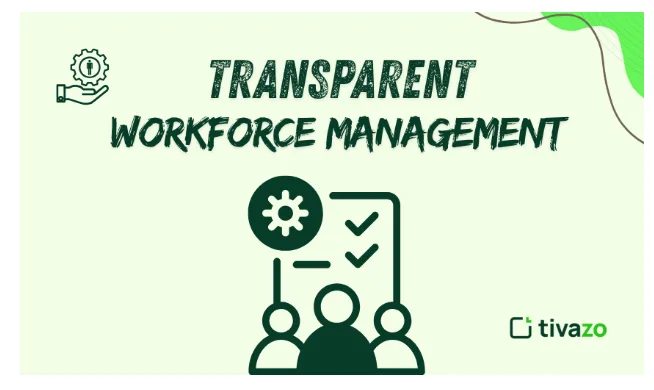Transparent Workforce Management: The Foundation of Fair Labor Practices in a Global Economy
Fair labor standards have become a global concern of governments, businesses, and consumers in the context of a global economy. As supply chains become increasingly complex and hybrid or remote work arrangements advance, transparency in workforce management has become a useful aspect of managing fair, accountable, and ethical labor practices across global borders.
Transparent workforce management can be defined as an open approach to tracking, monitoring, and communicating worker activities, hours worked, and labor conditions throughout an organization and the supply chain. It provides visibility into how your employees and contractors are managed, compensated, and protected, while also ensuring privacy and autonomy.
Comprehending Transparent Workforce Management
Transparent workforce management involves tracking, monitoring, and communicating workforce activities, hours worked, and labor conditions transparently across an organization and its supply chain. It provides visibility into how employees and contractors are overseen, compensated, and provided rights without infringing upon their privacy or independence.
Key components of transparency include:
- Accurate tracking of time and payroll data to avert wage theft and mispayment
- Real-time reporting tools that share visibility into labor conditions and productivity
- Adequate documentation for audits and compliance with regulatory requirements
- Transparent notification about workplace policy and workers’ rights
The Role of Transparency in Advancing Fair Labor Practices
- Preventing Abuse and Wage Theft
Accurate recording of hours worked, breaks, and overtime allows workers to be compensated fairly and promptly. It also increases employer accountability and protects workers from under zealous wage conditions and/or overworking.
- Increasing Accountability for the Supply Chain
In a globalized economy, companies often rely upon multi-tier suppliers that fall under different regulatory environments. Increased transparency will allow organizations to extend ethical oversight to assist in addressing labor violations from contractors and/or subcontractors.
- Reducing Legal and Brand Risk
Many of the major regulations governing companies, such as the UK Modern Slavery Act and Canada’s Forced Labor Supply Chain Act, have some manner of disclosures around labor practices. Transparent management capabilities contribute to organizations satisfying legal and reporting obligations while establishing brand credibility and investor confidence around ethical engagement with labor practices.
- Enabling Data-Driven Improvement
Transparent systems create actionable information that organizations can use to uncover risks, inefficiencies, or unfair practices. These information observations support continuous improvement at work and the development of better labor policies.
- Enabling Worker Empowerment
When policies and conditions are publicly shared, workers can understand their rights under labor law, enabled by transparency, and can raise their grievances and concerns without fear or limitation. When information is publicly shared, it can enable dialogues, build trust, and contribute to safer and more equitable workplaces.
The Tech Edge: Entitlement/Time & Attendance Tools
The technology that was built to serve workforce management identified transparency as a key priority. Time & Attendance tools collect data about time, attendance, productivity, and compliance in a secure, accurate manner, enabling organizations to uphold fair labor standards while the laborers preserve their privacy.
Key features include:
- Integration between remote and on-site teams
- User Experience (UX) that supports accurate reporting and engagement
- Secure data processing that protects privacy with accountability
- Real-time dashboards that allow supervisors to identify workloads and address potentially abusive labor polices
Challenges and Considerations
Although transparency carries tremendous value, it should be approached with caution and care. Monitoring too much could dangerously slip into surveillance, which undermines trust. As with most things, it is important for transparency to create ethical visibility rather than micromanagement.
There are other common challenges, including:
- Complex tracking across global supply chains.
- Inconsistent labor laws regionally.
- Technological capabilities in developing regions.
- Resistance from stakeholders who are not aware of the value of transparency.
The Future of Fair and Transparent Work
As the world becomes more mindful of labor ethics, the demand for transparency will be the rule rather than an exception. Organizations currently investing in transparent management systems will be better served to protect the human rights of workers, be compliant with regulations, and build trust with their social capital.
In the end, transparent workforce management is not only a compliance call to action, but a moral and strategic imperative. By leveraging the right mix of time tracking technology software, monitoring, and analytics, organizations can derive ethical, efficient, and empowering workplaces. The future of policy, business, technology, and corporate ethics has already chosen to forge ahead down a trail for a more egalitarian and humane global workforce, thereby ensuring every worker is recognized, valued, and respected.

